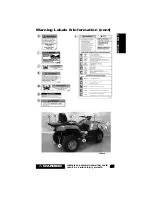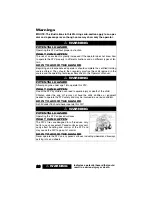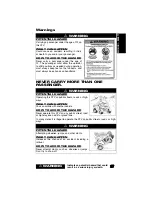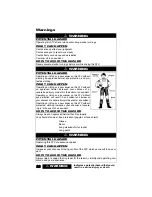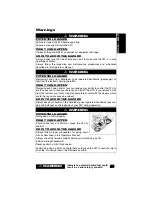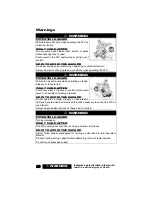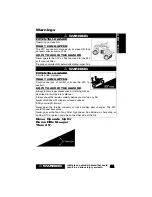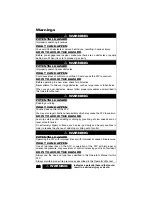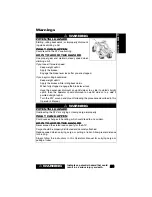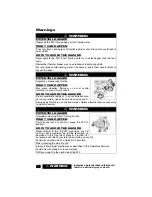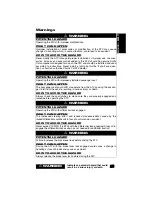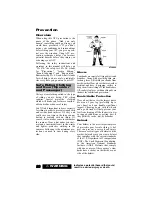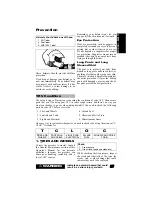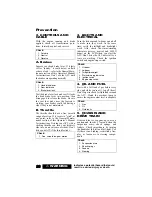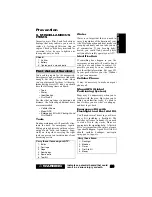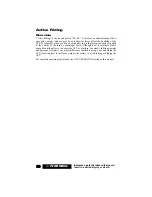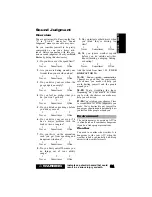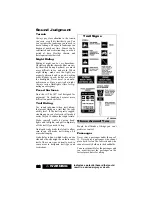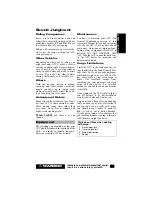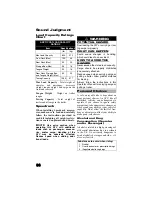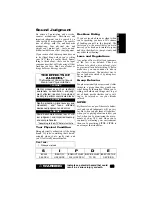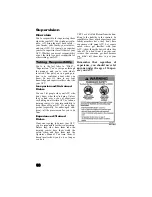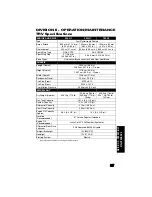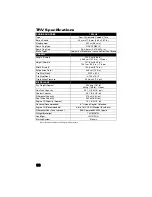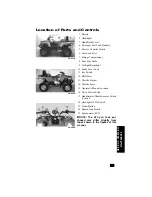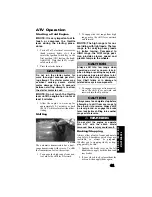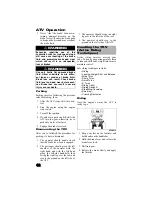
DIVIS
ION I -
SA
FE
TY
! WARNING
Indicates a potential hazard that could
result in a serious injury or death.
27
Prevention
These helmets should provide full-face
protection.
If you drop or damage your helmet, get a
new one immediately. Your helmet may
not protect your head from injury if it has
cracks, fissures, or other damage to its
outside or core padding.
Remember, your helmet won’t do you
any good if the chin strap isn’t fastened.
Eye Protection
Wear eye protection, such as goggles, to
completely surround your eyes to prevent
getting dirt or other items in your eyes.
Do not depend on sunglasses for proper
eye protection. Sunglasses are not recom-
mended; they don’t prevent objects from
flying in through the sides.
Long Pants and Long
Sleeved Shirt
The goal is to protect your body from
branches, long grass, airborne objects, or
anything else that could scrape your skin.
The more thick and durable the material,
the better protection it’ll provide. Riding
pants with kneepads, a jersey, and shoul-
der pads provide the best protection.
The second step in Prevention is checking the condition of your ATV. Chances are
good that you’ll be using your ATV in some rough terrain, and there’s no way you
want your brakes to go out when riding downhill. You need to check the following
parts on your ATV before every ride.
1. Tires and Wheels
2. Controls and Cable
3. Lights and Electrical
4. Oil and Fuel
5. Chassis and Drive Train
6. Miscellaneous Items
One easy way to remember what parts you need to check is by using the acronym “T-
CLOC.” It stands for:
1. TIRES AND WHEELS
Correct tire pressure is crucial. Consult
the General Maintenance section of this
Operator’s Manual for tire pressure
guidelines. Incorrect tire pressure can
cause poor handling, instability, and a
loss of ATV control.
While checking the tire pressure, inspect
the tread and sidewalls of the tires for
cracks, cuts, or other damage that could
indicate they need to be replaced.
Helmets should have one of these:
1. DOT label
2. Snell label
3. ANSI Z90.1 label
TRV Condition
T
C
L
O
C
T
IRES AND
WHEELS
C
ONTROLS
AND CABLE
L
IGHTS AND
ELECTRICAL
O
IL AND
FUEL
C
HASSIS AND DRIVE
TRAIN
Check:
1. Tire pressure
2. Tire surface (tread and sidewalls)



